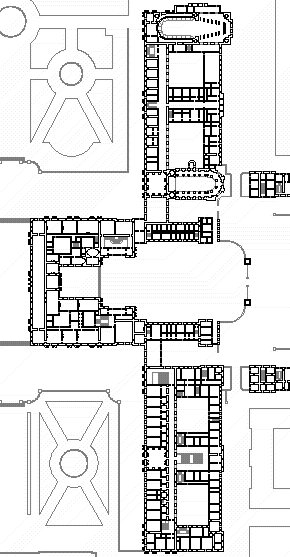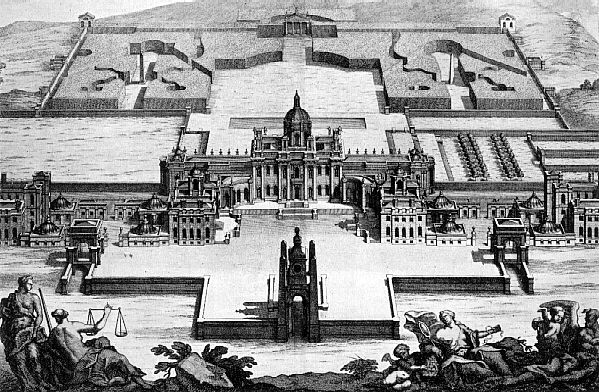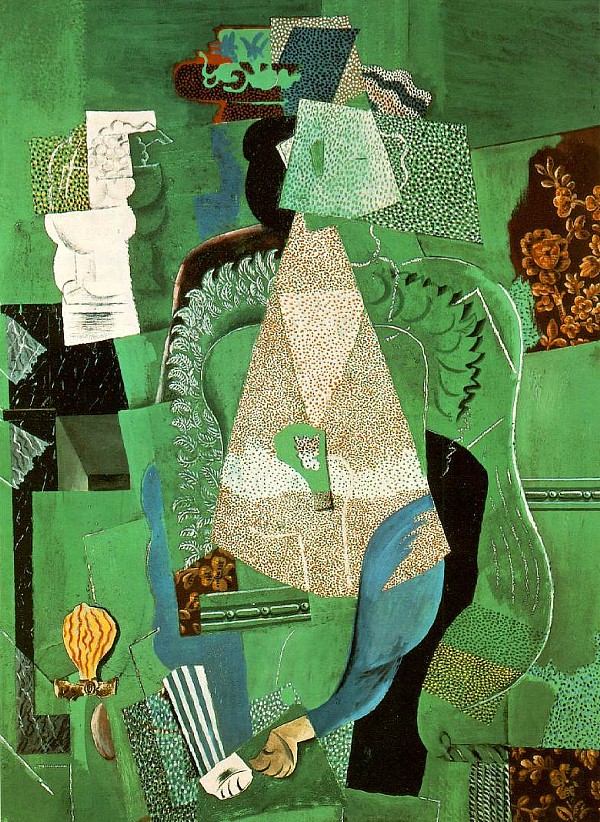01122301 ICM various plans 2110i49
2008.12.23 20:29
pragmatists turning political?
I'm using "reenactionary" more in terms of how ZP's designs 'reenact' the mat/box/blob paradigm of Le Corbusier's Electronic Calculation Center Olivetti at Rho-Milan. Although intrigued by ZP's 'new politics of the envelope' I'm not sure 'politics' is the right word to describe what it's really about, but it might just be right.

ZP notes how in the past it was in the plan where 'politics' was found, whereas he now see the politics in the envelope, and there seems to be something to that. Just recently I looked closely at the plan of the Palace of Versailles (when I was also reading ZP's essay in Log), and besides the political implication of the King's Bedroom on axis in the center, the similarity in plan of the Chapel and the Opera off to the side respectively got me thinking not just of their relative marginal positions, but how both plans represent 'theaters'. Anyway, if ZP's politics of the envelope can operate/communicate in the same type of way, it seems that would make for a novel/fecund design methodology.
| |
11122301 UNEP Headquarters axonometrics scale play 2235i06
12122301 House for Otto 3 wall and column extrusion capped IQ03 2309i03
13122301 rotated extruded mesh surfaces orthagonal solid models 2403i30 b
| |

I'm now wondering whether the above image of Castle Howard from Vitruvius Britannicus (published 1715-1725) somehow inspired the architecture of Piranesi as delineated within Il Campo Marzio (1762). Remember the...
I was prompted by the "what is experimental architecture" thread to look again at "Piranesi's Campo Marzio: An Experimental Design." After reading a few pages it became evident that the essay/project could be 'rewritten' to deliver a whole other set of results, a whole other 'history.'
By covertly publishing the Ichnographia in a second state was Piranesi himself conducting an experiment to see who would ultimately discover the two different plans?
Piranesi's language of the plans relates back to the origins of Rom(ulus and Remus) itself.
"Both Piranesi's Campo Marzio and Picasso's Dame au violon are "projects," though the former organizes an architectural dimension and the latter a human mode of behavior. Both use the technique of shock, even if Piranesi's etching adopts preformed historical material and Picasso's painting artificial material (just as later Duchamp, Hausmann and Schwitter were to do even more pointedly). Both discover the reality of a machine-universe: even if the eighteenth century urban project renders that universe as an abstraction and reacts to the discovery with terror, and the Picasso painting is conceived completely within this reality.
But more importantly, both Piranesi and Picasso, by means of the excess of truth acquired through their intensely critical formal elaborations, make "universal" a reality which could otherwise be considered completely particular."
Manfredo Tafuri, Architecture and Utopia: Design and Capitalist Development, p. 90.
There is no Picasso painting with the title Dame au violon, but it is possible that Tafuri is referring to Portrait of a Girl (1914):

Project: redraw the Ichnographia Campus Martius following the principles of Picasso's (Synthetic) Cubism.
| |
14122301 Villa à Garches 1100x550 plan Pruitt-Igoe/NNTC 2151i00
14122302 Composition Three 1100x550 plan Pruitt-Igoe/NNTC 2155i00
14122303 Picasso's Portrait of a Girl trace for cubist ICM 2436i01 b
14122304 Kennedy Plaza 1100x550 plan image attached 2093i37
14122301 Vallet de Martinis.DIID Museum of Ethnography Városliget Budapest
14122302 MOS.Workshop-HI Barack Obama Presidential Center Honolulu
17122301 Appian Way Ichnographia Campus Martius Las Vegas Strip Roma Interrotta plan images 2063i01 b
17122302 Johnson Wax Building and Research Tower plans section 216di01
|


